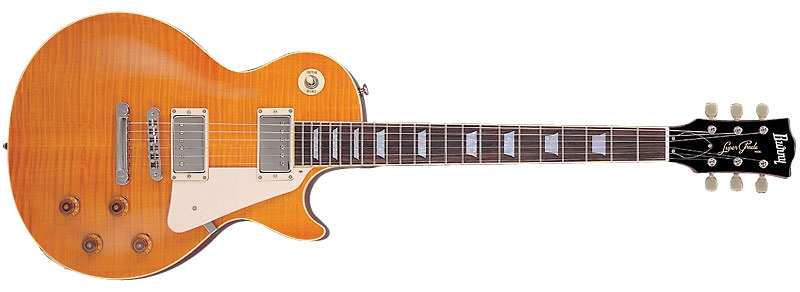
Some Burny guitars from the 1980s had a Matsumoku bolt tenon that was also used on many Matsumoku-made Aria guitars.

Some Burny guitars from the 70s and 80s had a tenon-and-dowel neck joint similar to what was used on some Greco guitars.

The RLG-150, RLG-120, and RLG-90 models were made by Matsumoku from 1982 to 1986. The FLG-240, FLG-150, FLG-90 Les Paul models and the FSA-80 Semi Acoustic model were made by Terada from 1980 to 1981. The higher end Burny guitars have fret edge binding and most models were finished with a thin polyurethane finish with only a few high end models having nitrocellulose lacquer finishes. The VH-1 pickups from 1987 onward are approximately 8.2 kΩ DC resistance, have ceramic magnets, and are not wax potted. The early VH-1 pickups, starting in 1983 (installed in Burnys from 1985 to 1987) are approximately 7.5 kΩ DC resistance, are handwound, and have alnico magnets. The higher priced Burny electric guitars had VH-1 Gibson PAF style pickups installed from 1985 onward.

The original selling price in Japanese Yen is often included in the model number for example FLG-90 = 90000 Japanese Yen. Chris Rockson of The Pyratz also uses Burny Les Pauls, including a rare Purple tiger finished Studio, with rare dot neck. Andy Latimer of Camel also uses a flame top Burny Super Grade as his main Les Paul-style guitar. Steve Jones from the Sex Pistols has used Burny guitars as has Hideto Matsumoto from X Japan, Mike Clark of Suicidal Tendencies, Robert Fripp of King Crimson, Steve Hackett of Genesis, Billie Joe of Green Day and Duff McKagan in his side project Loaded. The Burny Les Paul models first appeared in the mid-1970s. Fernandes initially made acoustic guitars and started making electric guitars around 1971 or 1972. Its Burny brand was used for the Gibson replica guitars while the Fernandes brand was used for the Fender replica guitars. The Fernandes company was established in 1969 in Japan. Xylophones, Vibraphones, Marimbas, Glockenspiels


 0 kommentar(er)
0 kommentar(er)
